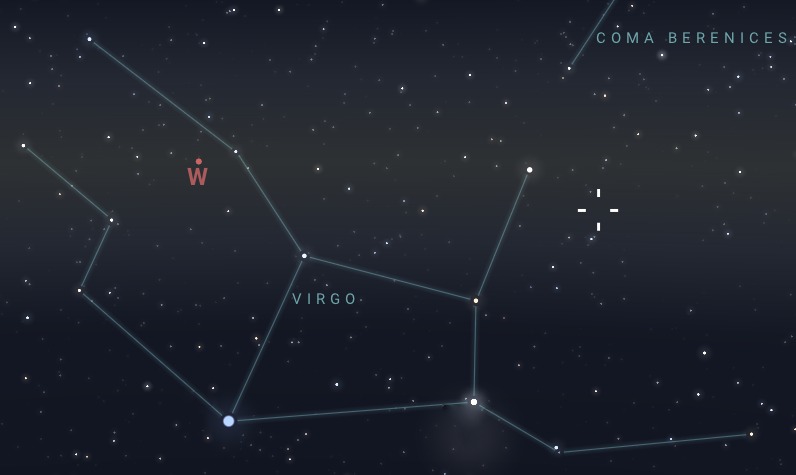M60 (Messier 60), also known as NGC 4649, is a giant elliptical galaxy located in the constellation Virgo. It is one of the largest and most luminous galaxies in the Virgo Cluster. Here are some details about M60:
Structure and Features
M60 is about 120,000 light years in diameter, making it comparable to or slightly larger than the Milky Way. It has an E2 classification, indicating it is a slightly elongated elliptical galaxy. It lacks the prominent spiral arms and dust lanes found in spiral galaxies. The galaxy is composed primarily of older, redder stars, typical of elliptical galaxies, indicating that it has a relatively low rate of new star formation.
M60 hosts a significant number of globular clusters. These clusters are dense collections of ancient stars orbiting the galaxy’s core. Close by is a notable companion, NGC 4647, a barred spiral galaxy, with which it is interacting gravitationally.
M60 contains a supermassive black hole at its center, with an estimated mass of about 4.5 billion solar masses. This black hole is one of the most massive known.
Observational History
M60 was discovered by Johann Gottfried Koehler on April 11, 1779, while he was observing comet C/1779 A1 (Bode). Charles Messier independently discovered M60 a few days later and included it in his catalog on April 15, 1779.
As a prominent member of the Virgo Cluster, M60 provides valuable insights into the dynamics and interactions of galaxies within a dense cluster environment.
Observing the galaxy
M60 can be observed from the Northern Hemisphere during spring, particularly from March to May, when Virgo is high in the night sky. It can also be observed in the Southern Hemisphere from locations closer to the equator during the same months (autumn). The farther south you go, the lower it will appear in the sky, making it more challenging to observe.
M60 can be seen with medium to large amateur telescopes. It appears as a bright, oval-shaped object with a more concentrated core compared to other elliptical galaxies.
Use star charts or stargazing apps to help locate it in the sky. The galaxy is located in the eastern part of the Virgo Cluster, near other Messier objects like M58 and M59. Start by locating the bright star Vindemiatrix (Epsilon Virginis) in Virgo. M60 can be found about 5 degrees to the west of this star.




